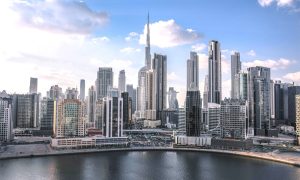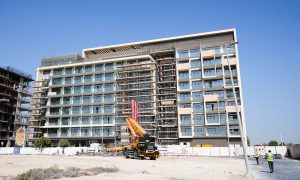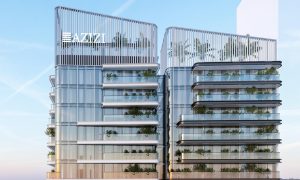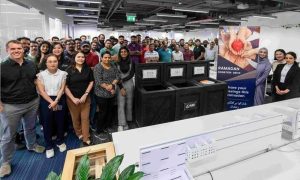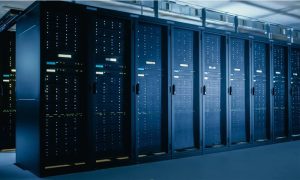Signify unveils 3D-printing facilities for luminaires in the Netherlands
Lighting product manufacturer tells MECN.com that it is eyeing opportunities in the MENA region for its 3D-printing luminaires

Signify, a leading manufacturer of lighting products, has unveiled its facilities to 3D print light shades and fittings (luminaires) in the Netherlands, along with plans to establish similar 3D printing facilities in the US, India and Indonesia.
In a statement, the company said that it had perfected this highly flexible, more sustainable form of manufacturing, using a 100% recyclable polycarbonate material. This allows the luminaries to be bespoke designed or tailored to meet the exact needs of customers, while also allowing the products to be recycled at the end of their life, thereby supporting a circular economy.
As part of the launch, Marks & Spencer, the global retailer, announced that it is in the first phase of rolling out thousands of 3D printed luminaries across its stores in the UK by the end of 2020. It joins other major customers such as Albert Heijn, SAS, Total and Praxis.
Signify’ s investment in 3D printing further illustrates the company’s commitment to better serving its customers, while reducing their, and its own, carbon footprint, the statement added. A typical manufactured luminaire (excluding electronics and optics) has a 47% lower carbon footprint than a conventionally manufactured metal luminaire. Nearly every component may be reused or recycled, supporting the concept of a circular economy, it explained.
“We are the first lighting manufacturer to produce 3D printed luminaires on an industrial scale, reinforcing our position at the forefront of lighting and sustainable innovation,” said Olivia Qiu, Chief Innovation Officer at Signify during a presentation at the event.
“Printing luminaires provides a more flexible, fast and more environmentally friendly way to manufacture. We can create new, or customize existing designs, that fulfil customer needs quickly without huge investments and long development cycles.
“Customers can have their ideas brought to life in a matter of days rather than months and printing requires less energy. Our 3D printed luminaires have a lower carbon footprint than traditionally built metal luminaires. They weigh less, which enables us to reduce the carbon emissions in shipping by 35%. By keeping production close to urban areas, we reduce the footprint even further. And of course, LED lighting is more energy efficient than conventional lighting.”
Kevin Raaijmakers, global commercial director 3D Printing at Signify, told MECN.com that the applications for 3D printed luminaires is vast, with applications across the board.
“If you look at our current applications – it’s not only shades. For example, if you look at the M&S project, those are functional luminaires. They are indoor, but they’re not decorative. You can see that it’s integrated LEDs, not just the outer part. It’s a real luminaire – the only thing not 3D printed is the electronics.
“We’ve done a project with the Dutch Railways, for the lighting of their waiting areas, which are semi-outdoors. We used luminaires that were specifically made for that purpose. They’re vandal proof and they’re made of really tough materials that have multiple applications,” he explained, adding that Signify is looking at using multiple types of materials, which are also suitable for outdoor use.
“It’s not available yet, but together with our suppliers, we’re looking into it. That’s one of the next stages.”
Signify has already established a 3D printing facility in Maarheeze in the Netherlands, which will have up to 500 3D printers of different sizes. These will have the ability create luminaires of up to 60cm height and width. In January 2020, new Signify 3D printing facilities will begin operations in Burlington, Massachusetts in the USA, which will serve both professional and consumer needs.
Additional facilities in Noida, India and Jakarta, Indonesia are expected to follow quickly after, the company said. LED lights will be integrated into the luminaires at all these sites.
Given the scale of opportunity in the GCC and MENA region, the company’s executives told MECN.com that they’re currently looking into opportunities to expand their reach in those markets, through the utilisation of the 3D printing technology.
“We’ve started in Europe and you’ve seen we’ve announced facilities in the US, India and Indonesia. But that won’t limit us in the future,” Raaijmakers said. “That’s the nice thing about this technology. You can build hubs relatively fast and you can scale them to customer demand. It’s not like you need to know five years ahead where you’ll need to be. You can follow customer demand. In Dubai and the rest of the Middle East area, there are similar applications and customers, so we’re currently looking into that,” he concluded.








